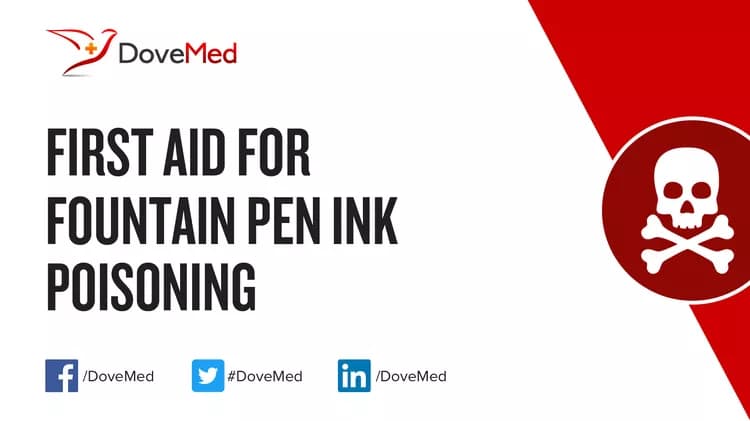The topic First Aid for Fountain Pen Ink Poisoning you are seeking is a synonym, or alternative name, or is closely related to the topic First Aid for Ink Poisoning.
Please find relevant information on First Aid for Fountain Pen Ink Poisoning regarding cause, signs & symptoms, administration of first aid treatment, prognosis, preventive measures, and additional resources HERE.
Quick Summary:
- An ink is a complex mixture of pigments and dyes that is available in liquid, paste, or even powder form. There are a variety of inks depending on the requirement - whether to write down class notes or for printing newspapers and magazines
- Ink Poisoning is the accidental or intentional intake of any ink product. The exposure may also occur following skin or eye contact
- The condition is diagnosed based upon the clinical history, combination of signs and symptoms, and additional tests (that may include, in some cases, radiological studies and laboratory tests)
Note:
- In case of an emergency, call 911 (or your local emergency number) for assistance
- In case of poisoning, call National Poison Control Center at 800-222-1222 (or your local poison control center) and follow instructions
- Provide them with information such as dosage, type, strength and time of ingestion of medication, age, weight and general health status of affected individual
What are some Useful Resources for Additional Information on Fountain Pen Ink Poisoning?
National Capital Poison Center (USA)
3201 New Mexico Ave, Suite 310 Washington, DC 20016
Administrative Line: (202) 362-3867
Emergency Line: 1 (800) 222-1222
Fax: (202) 362-8377
Email: pc@poison.org
Website: http://www.poison.org
American Association of Poison Control Centers (USA)
515 King St., Suite 510, Alexandria, VA 22314
Phone: (703) 894-1858
Email: info@aapcc.org
Website: http://www.aapcc.org
References and Information Sources used for Fountain Pen Ink Poisoning:
https://medlineplus.gov/ency/article/002791.htm (accessed on 09/28/2017)
http://www.wisegeekhealth.com/what-are-the-symptoms-of-ink-poisoning.htm (accessed on 09/28/2017)
http://www.livestrong.com/article/22877-ink-poisoning-symptoms/ (accessed on 09/28/2017)
https://www.fda.gov/ForConsumers/ConsumerUpdates/ucm253338.htm (accessed on 09/28/2017)
Helpful Peer-Reviewed Medical Articles for Fountain Pen Ink Poisoning:
Zhou, Y., Liu, J., Ye, J., Zou, Z., Ye, J., Gu, J., ... & Yang, A. (2010). Poisoning and regeneration of Pd catalyst in direct formic acid fuel cell. Electrochimica Acta, 55(17), 5024-5027.
Sadayan, P., Thiyagarajan, S., & Balakrishnan, B. (2013). Inhibitory activity of ink and body tissue extracts of Euprymna Stenodactyla and Octopus Dollfusi aganist histamine producing bacteria. Middle-East Journal of Scientific Research, 16(4), 514-518.
Behera, C., Garudadhri, G. V., Pradhan, M., Khurana, N., & Dikshit, P. C. (2012). Fatal nitrobenzene poisoning: Some case reports and medicolegal aspects.
Zięba‐Palus, J., & Trzcińska, B. M. (2011). Establishing of chemical composition of printing ink. Journal of forensic sciences, 56(3), 819-821.
Hsu, H. Y., & Tongol, B. J. (2013). Electrochemical and surface characteristics of carbon-supported PtSn electrocatalysts for ethanol electro-oxidation: possible application for inkjet ink formulations. Advances in Natural Sciences: Nanoscience and Nanotechnology, 4(1), 015012.
Related Articles
Test Your Knowledge
Asked by users
Related Centers
Related Specialties
Related Physicians
Related Procedures
Related Resources
Join DoveHubs
and connect with fellow professionals


0 Comments
Please log in to post a comment.